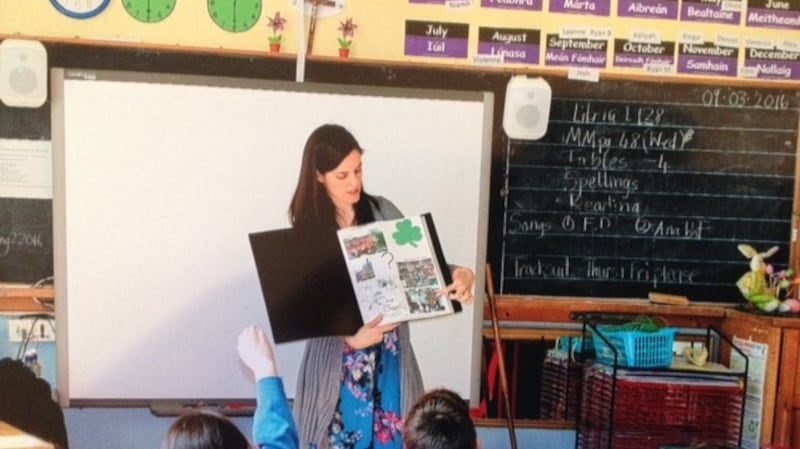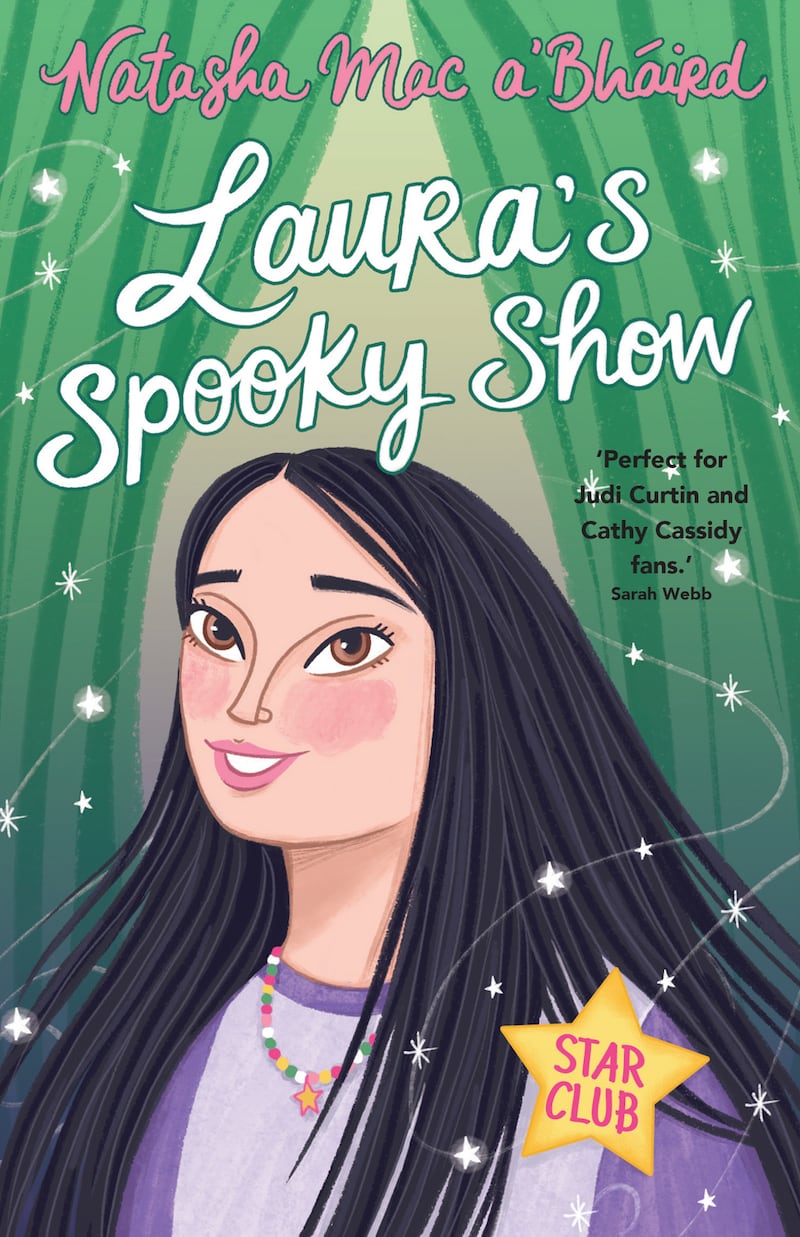When you imagine the life of a writer, you probably see us shut away in a room at a desk, scribbling or typing furiously, or staring into space hoping for inspiration. But if you write for children, you are likely to spend a good bit of your working life meeting your readers. At certain times of the year - especially now, with new books hitting the shelves for autumn and Children’s Book Festival on the horizon – writers can have a full timetable of events that leave them barely enough time to actually write.
I have two new books for children coming out this autumn – Laura’s Spooky Show has just hit the shelves, and Reindeer Down, a Christmas story for younger readers, will be published by the O’Brien Press in October. It’s exciting to be embarking on a new round of visits to schools, libraries and bookshops. Exciting, and terrifying.
I’m always a bundle of nerves before events. I often have trouble sleeping, thinking about all the things that could go wrong. What if I’m standing in front of the class and I can’t think of a single thing to say? What if the children sit there staring at me blankly and don’t ask me any questions? But once I’m up there in front of the class, the adrenalin kicks in and I enjoy every minute. I always come out of the visit on an absolute high. I’ve learned to accept that this rollercoaster is just part of the process – you can’t have one without the other.


My first children’s book was published 10 years ago, and since then I’ve been doing events all over the country, with children ranging in age from five to 15. As I’ve written more books, I’ve developed different types of events to suit the different age groups.
It’s good to be able to bring something from your own background to give more depth to the session. Publishing is my day job too, so I like to show the children the different stages in how a book comes into being. I have print-outs and pictures of the different stages, from the ideas to my very scribbled first drafts, to the typed version I submit to my publisher, to how the page is laid out for the illustrator to do their magic, to the final proofreading stage.
I try to make my sessions as interactive as possible. I do a Q&A question at the end, but if children have things they want to ask me before we get to that point I’m happy to go with the flow. I do try to make sure they are questions though, rather than monologues. I find it’s important to get the balance right between listening to what they have to say, and not letting them go on so long they are boring their classmates, who may well have heard it all before. I remember one session where a little boy managed to bring Sonic the Hedgehog into everything we discussed, from reading and writing to the St Patrick’s Day parade. The teacher could barely suppress a groan.
One thing children always want to know is how much money writers make. I think they assume that if your name is on the cover of a book you have it made. Clearly, you’re living in a mansion, driving a Rolls Royce and relaxing by your indoor pool. I hate to burst their bubble by telling them that, for most of us writers, we count ourselves lucky if we can make a living out of it. I ask them what percentage of the cover price they think goes to the author. They’re always shocked at the answer (it’s less than 10 per cent – often quite a bit less). It also leads in to explaining just how many people are involved in getting our book onto the shelves. They often haven’t given much thought to the editors, designers, publishers, printers and booksellers who turn those scribbled manuscripts into the books they can hold in their hands.
Other questions focus on the creative process. “Where do you get your ideas?” is a perennial favourite, and it’s one I have struggled to answer in the past. I usually have several ideas percolating away on the back burner, and by the time they have developed into something I can get down on paper, I’ve often forgotten where the original spark came from. Actually, with my Star Club series I do have a clearer idea. I can even show the children photographic evidence, because the inspiration came from my own childhood. Like a lot of children, I used to love dressing up and putting on shows with my sister and brothers. We would act out a story we had read, or make up our own. It’s probably just as well my siblings didn’t know I’d be showing their photos to schoolchildren one day.

Every session I do is different – every group of children brings a new dynamic, a reaction I couldn't have predicted, a question I've never had before. My hope is that I leave them feeling inspired to explore their own creativity, and that any aspiring authors in the group will feel encouraged to follow their dream. And I always get a warm glow from the fact that, despite all the high-tech devices competing for their attention, today's children still love books.
Natasha Mac a'Bháird's latest children's book, Laura's Spooky Show, is out now. It is launched this Saturday in Hodhes Figges, Dawson Street, Dublin


















